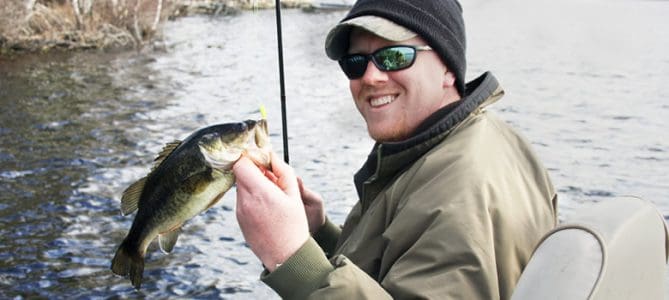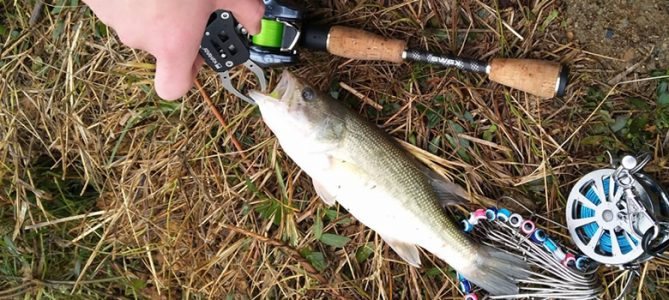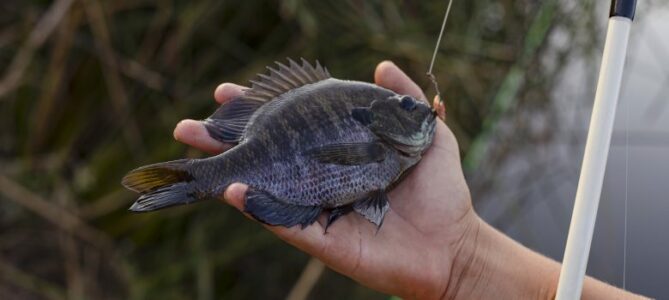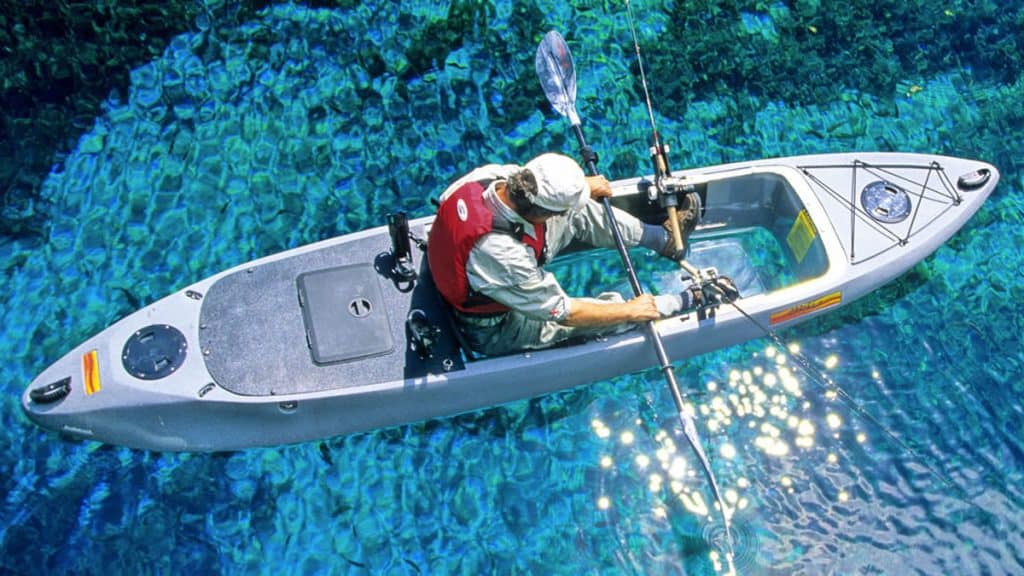If you buy via a link on this page, we may receive a commission, at no extra cost to you.Learn more
When you’re in the market for a bass fishing boat that you can use inshore on saltwater, your research can become overwhelming. That’s why we did the research for you and found the 11 best boats for inshore and bass fishing. Each boat offers its own unique specialties and it’s up to you to decide which will work best for your bass fishing.
Typical bass fishing boats are smaller and cannot handle the high seas of salt water. There are some boats, though, that are small enough that number one, you can afford, and number two, are still equipped to take on the ocean if you are traveling long distances.
While inshore fishing is defined as fishing on water less than thirty meters deep, and could technically refer to most freshwater fishing, for the purposes of this article we’ll be looking at boats that can also handle the high seas. Inshore fishing is often on waters as much as nine miles off the coast and into the ocean, so for that kind of bass fishing, you’ll need a boat capable of keeping you and your crew safe.
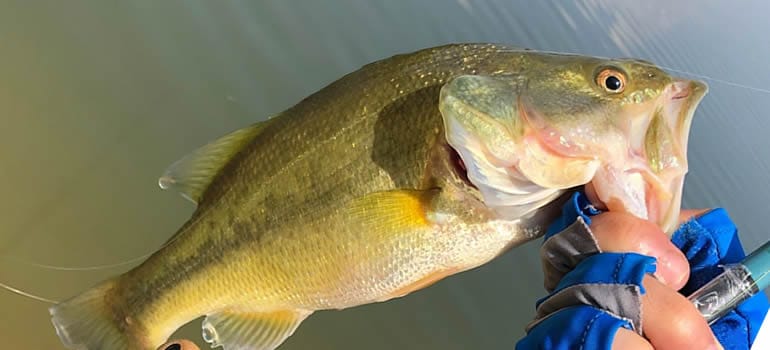
This article will also focus more on center console boats, as they are the best equipped for fishing. Why is this? Because with the steering wheel and components in the middle of the boat, you can fish from 360 degrees around the boat.
You also want to make sure not to buy too big of a boat, as it will be difficult to get around inter-coastal waterways. About 25 feet is the maximum length you’ll want for your inshore bass fishing boat.
If most of your fishing will be in calm waters, a bay boat may be exactly what you’re looking for, rather than a larger center console boat. To begin, I want to highlight the differences between a bay boat and a center console boat.
Center Console Characteristics
- Higher sidewalls than a bay boat, allowing for treks through deeper water.
- Larger outboard engines.
- Includes a transom door (allowing you to easily walk in and out of the back of the boat).
Bay Boat Characteristics
- Shorter sidewalls than a center console boat.
- Casting deck with step up to the deck, storage below the deck.
- Usually no transom door.
- More shallow draft to allow for easy access in and out of small waterways.
Bay boats are a newer entry into the world of fishing boats and provide a happy medium between flat bass fishing boats, and larger center console cruisers. Bay boats walk a tight rope of trying to balance a shallow draft (how far below the surface of the water the hull goes) while needing to provide enough of a V-shaped hull to handle offshore waters.
With that said, with each passing year, the lines between bay boats and flats have been blurred. In the same way, the differences between center console boats and bay boats are harder to distinguish.
On a typical flat bass boat, the hull is not capable of handling offshore waters. While we are focusing on inshore boats, in order to get to certain inshore fishing holes a boat sometimes must travel through thicker, offshore waters. What you are looking for in a boat to handle that type of water is a deeper V-shape in the hull.
Ultimately, the choice is yours to decide what kind of boat works best for your needs. If you never venture offshore, a bay boat will be perfect. But if you’d like the ability to handle bigger waves, you’ll want one of the larger center console boats.
We make sure to highlight the best of all worlds in this article, so without further ado, here are the 11 best boats for inshore and bass fishing.
Blue Wave 2800 Pure Hybrid
We’ll start with one of the newest boats by Blue Wave which claims to be the world’s largest bay boat. Now, this boat won’t come cheap, but neither will the thrills. If you have about a hundred grand to spare, it’ll be worth every penny. But don’t take my word for it, check out the pros and cons:
Pros
- Quiet and responsive 557 horsepower engine.
- Easily can take on the high seas offshore, while maintaining a shallow enough draft for inshore.
- Double-stepped hull provides fuel economy and the ultimate ride quality.
- The abundance of storage includes a 500-quart fish box with a macerator pump.
- Pressurized live well to keep your fish from bruising.
- Additional live wells have recirculating pumps and a pro air system to keep bait fresh.
- Room for two 12” screens on the helm.
- Fuel fills on both port and starboard.
- Can accommodate up to 11 people on board.
- No species of fish is safe when you’re patrolling waters with the Blue Wave 2800 Pure Hybrid.
Cons
- At over 27’ and 3650 pounds, this is a beast of a boat and you may want something smaller.
- Affordability may be an issue at over $100,000.
Blue Wave 2400 Pure Bay
If you’d prefer a smaller bay boat, 2400 may be just the ticket. The 2400 Pure Bay is a pure fishing boat, with fewer frills and more room to get lines in the water.
Pros
- Pro Series 3” drain that Blue Wave claims to be “nearly impossible to clog.”
- AFD drain system keeps floors clean and dry.
- Built for the maximum fishing area with extremely large casting decks on the front and back of the boat.
- 24’5” and 2200 pounds make it a full 1450 pounds lighter than 2800.
- Can accommodate up to nine people on board.
- 14” draft allows you to go shallower than the 2800s 17” draft.
Cons
- While it’s significantly less expensive than 2800, 2400 still costs upwards of $70,000.
Grady-White 191 Coastal Explorer
The bigger Grady-White 251 Coastal Explorer almost made this list, but it’s more of a pleasure-cruising family boat than a pure fishing boat. With added seating eating up what should have been fishing space, I can’t recommend the 251, especially at $30-40k more than the 191 CE.
The newer 191 is a slimmed-down version of the luxury 251 CE. It’s over 1000 pounds lighter, and more than five feet shorter at 19’4”. The 191 CE also comes packed with standard features that you end up having to pay thousands extra in up-charges on similar boats. These features include the aluminum leaning post, molded pedestal seats, a removable backrest, and a swing-up footrest.
Beyond comfort and convenience, the Grady-White designed hull is known for its standout performance. This includes a smooth ride and fuel efficiency.
Pros
- SeaV2 hull provides a comfortable ride while still capable of going offshore.
- Fishing-friendly interior with two live wells, one under the seat of the console, another at the center of the stern.
- The interior has the capability of going from fishing boat to family cruise boat with an optional table, and seats that can fold out for comfort.
- The smaller size provides for quality fuel efficiency.
Cons
- You may want more rod holders than the four vertical holders on the interior. (Four more are recessed into the console seat).
- On a 19’4” boat, while it’s easier to maneuver, space can become an issue if a lot of people are fishing.
Boston Whaler 210 Montauk
The Boston Whaler 210 Montauk is the flagship of the Montauk family, and it’s the bee’s knees when it comes to hybrid center console bay boats. With a shallow draft of just 15 inches and a not-so-long length of 21’4” you can easily get in and out of small waterways.
The Mercury Four Stroke standard engine won’t blow you away at 150 HP, but if you want more power you can add a 200 HP V6 Mercury with hydraulic power steering and a fuel/water separator.
Pros
- Shallow 15” draft.
- Hydraulic steering with a Mercury 150 4-stroke engine.
- Time to plane of 3.6 seconds.
- Eight vertical rod holders, space for two more under the console seat.
- 94-quart cooler.
- The optional 30-gallon livewell is large, aerated, and lighted.
- Optional aft cockpit table.
- Full foam flotation hull is “unsinkable.”
- Impeccably designed hull slices through waves.
- Shallow 15” draft for close inshore fishing.
- Optional teak finishes for the nostalgic angler.
- Plenty of storage space.
- Capacity to hold nine people on board.
- New railings allow you to add as many additional rod holders as you wish.
- But you probably won’t need those as the 210 Montauk has 4 rod holders on the transom, 4 on the leaning post, 5 on the T-top, and 4 more with 2 on each side of the bow.
Cons
- None to speak of!
You’ll want to go with the Fishing Package which includes a 94-quart cooler seat, tackle drawers, and of course the must-have rod holders. You will also want to get the Deluxe Leaning Post option. This package adds a 30-gallon livewell, a must-have option, as well as raw-water washdown capability.
A raw-water washdown allows you to clean the deck with ease, or clean off your anchor before putting it back on board. This is an invaluable addition to keeping your boat in the best shape, which will lead to a better resale value if you want to upgrade in the future. It all adds up to rugged utility and convenience, allowing you to focus on the fishing.
Cobia 201 CC
One of the most popular center console boats on the market, the Cobia 201 CC’s popularity speaks for itself. The reason it became so popular is that it achieves its goal of imitating a larger fishing boat on a smaller scale.
Pros
- Two 25-gallon fish boxes with overboard drains provide ample room for caught fish and bait.
- The Cobia doesn’t stop there, with an additional recirculation of 26-gallon livewell in the port corner of the transom bulkhead.
- And for your cold beverages? There’s a 52-quart insulated cooler under the console’s forward bench seat.
- Four vertical rod holders in the console, as well as a four-rod rocket launcher overhead.
- Horizontal rod storage is available under each coaming and an additional four-rod rocket launcher is set into the aft of the leaning post.
- Self-bailing cockpit.
- Hydraulic steering.
- Planes in 3.46 seconds.
- The Yamaha F150 engine is renowned for its performance.
- Excellent fuel efficiency of 4.03 MPG is well above most competitors.
Cons
- The top speed of 44 MPH is lower than most of the competition.
Century 2200CC
Both Century and Cobia are owned by Yamaha, and it’s no surprise that both are top contenders for the best inshore bass fishing boats. The Century is built for fishing, and no fish is safe when you’re patrolling the water on the 2200CC.
At 22’ long, the Century is not too large to be bulky on smaller waters. Max horsepower is 250 HP, plenty enough to fire away to the next fishing hull at top speeds. The draft of 17” is a little higher than some of the competition, but still shallow enough to handle most inshore fishing.
Pros
- Open deck design allows fishers to freely move around the boat.
- Two fish boxes at 180-quarts each.
- 30-gallon aerated baitwell.
- Removable cooler.
- Two tackle drawers.
Cons
- While Century claims to have plenty of rod holders, it’s not as much as the competition, and not enough rod holders come standard.
- The new sticker price on this is over $75,000.
Ranger 2510 Bay Ranger
The Bay Ranger is a legend in the fishing boat universe, and Ranger has looked at every last detail on 2510. At just under 25’ long, but with a Mercury 350, this boat can basically go anywhere. The styling of the hull impresses just as much as
The main livewell is huge, with two fill pumps that bring in freshwater, as well as a recirculation pump. There is an additional crustacean well on the stern port side. On the starboard side is additional dry storage, as well as tackle drawers. On the port side bulkhead is a raw-water hose.
Pros
- The casting deck can flip open to create two extra seats, which flip open themselves for access to the bilge.
- Helm has room for two 12” Raymarine Axium Pro displays.
- USB and Aux ports to the left of the helm, and the electronics box is above the helm.
- The leaning post station is perfectly designed with two foldable seats and steps.
- Color-changing LED lights on the helm.
- The foredeck is designed for dry storage and also includes a large built-in cooler.
- Foredeck also includes two rod lockers, including a ventilation system to keep your rods dry and well-maintained.
- Storage for a net bucket.
- Rod storage for days: 3 rod holders on each gunnel, 2 shotgun rod holders on the transom, 6 rocket launcher rod holders on the hardtop, one kingfish rod holder on either side of the hardtop, and finally on either side of the livewell. That’s a total of 20 rod holders!
- On the back of the console is a seat on a door that opens up to a changing room that can fit a portable head.
Cons
- Tipping the scales at over $100,000 is the only drawback, but you get what you pay for and more if you are in this price range.
Ranger 2310 Bay Ranger
While it can be hard to peel your eyes away from the 2510 Bay Ranger, that sticker price likely has you looking for a similar but lower-cost option. Enter the 2310 Bay Ranger which shares many of the same features as 2510.
Pros
- Max horsepower of 300 HP.
- Stainless steel propeller.
- Hydraulic steering.
- In the rear is an aerated livewell/baitwell with high-speed pickup and in-line water filter.
- In the front is another livewell/baitwell combo.
- Leaning post is standard with 30-gallon baitwell and additional storage.
- Rod storage organizers on either side of the boat.
- Rod holders on the console and decks.
- Lockable storage boxes.
- A locker just for your anchor.
- LED navigation lights and LED cockpit, LED lights in the livewell, and dual LED underwater lights.
Cons
- The console panel has room for just one large display.
- At just under $70,000 this boat is still expensive.
Carolina Skiff 198 DLX
If you can’t afford a $50k-$100k boat and let’s be real, most of us fall into that category, look at the Carolina Skiff. Yes, as a skiff, it’s not technically a bay boat or a center console. But you’ll not only pay less than half the price of these other boats, you’ll be getting a boat capable of going through the smallest waterways with drafts under 9” on most models.
The reason for the extremely low draft is the DLX models have a square hull, rather than a V-shaped hull. This means that you won’t be able to take the skiff offshore unless you’re feeling extra lucky (not recommended) but you pay for what you get.
Pros
- More room to fish.
- Extremely low draft and can plane in 3 inches of water.
- Elevated casting decks on the front and back.
- Hydraulic steering.
- Sticker price under $25,000 new.
Cons
- 90-horsepower engine may be underwhelming.
- Can’t go far offshore.

